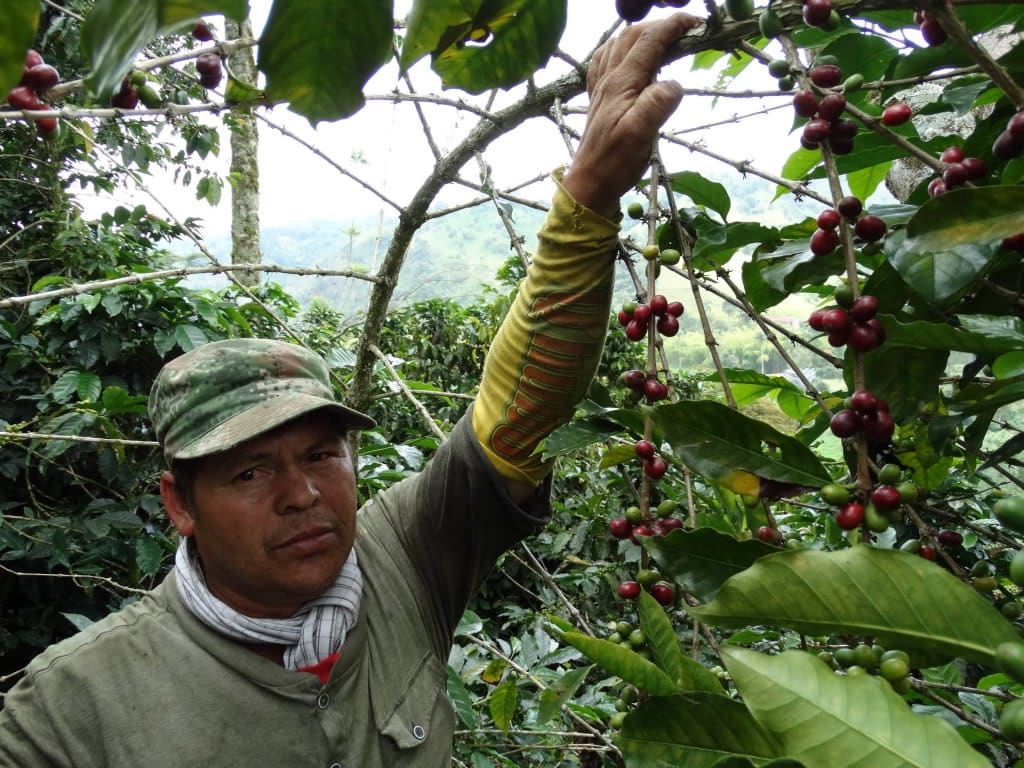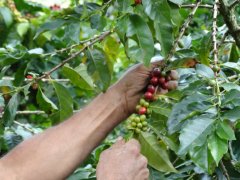The Story of the Historical Origin of Costa Rican Coffee: an introduction to the cultivation of Organic Coffee in Costa Rica

Professional coffee knowledge exchange More coffee bean information Please pay attention to coffee workshop (Weixin Official Accounts cafe_style)
Eduardo Matos History
Costa Rica is a country located next to Panama, located in the central part of the United States, serving as a bridge between the North and the South. Its geographical location makes it a trading hub for indigenous people. When outsiders arrived from the Old World, they found that the new immigrants had introduced a variety of food plants because of their habits of diet and clothing. Coffee had become popular in Europe, and it was time to spread it. Costa Rica has various advantages in terms of environmental conditions, such as volcanic soil and stable and reliable rainy season and temperature, combined with the location of agricultural soil at an overall height of 800-1600 meters, which is an impeccable cultivation environment for coffee crops, so Costa Rica naturally introduced coffee.
Costa Rica introduced coffee from the Caribbean population in about 1720, and until then Costa Rica's agriculture was mostly self-sufficient.
Gradually, the Colombian government began to adopt a holistic approach to promoting coffee cultivation, including providing land to farmers and taxing people interested in growing coffee. Coffee had a better name at the time-"grano de oro" meaning golden grain. Although Spain had long since gained independence, Costa Rica did not become a sovereign state until 1838, thanks to its then head of state, Rulio Carrillo. At that time, the Fuehrer proposed a solid agricultural program, made coffee the center of national economic profits, and began to build a road to the Atlantic Ocean to help quickly transport goods to Europe and the North, which took 50 years to complete. At the same time, some rich and powerful people began to appear in society, one of whom was Don Santiago Fernández Hidalgo, who owned the maze. He was the first to figure out how to export coffee beans in large quantities, and he was one of the key players in improving the production and processing of coffee cherries and beans. One of the innovations was the fermentation of cherries, and later new coffee varieties were introduced, such as Bourbon Bourbon.
Coffee cultivation started slowly, but growth has been steady. This is more or less because the country did not experience large-scale social conflicts affecting the functioning of the State before the independence movement, and even if the independence movement did have some impact, such conflicts were not as serious and cruel as similar events in other regions such as Colombia and Venezuela. After gaining independence in 1821, the country's economy began to depend on small plantations being planted around it, many of which were promoted by religious groups, to which knowledge and even seeds about planting Typica or Criollo varieties (all Arabica) were attributed.
For a while, the economy continued to grow, and it seemed that the country could enjoy almost eternal prosperity and stability. Unfortunately, good times did not last long. During 1870 - 1890, social discontent over wages and labor benefits had accumulated to a critical point. Coupled with the decline in international prices and the debt owed for the construction of the Atlantic Railway, society began to realize that it was facing economic collapse. People began to shift their attention to improving social equality, education, industry and diversification of income sources.
With the advent of the twentieth century, mules were gradually replaced by chariots and trains, roads to the Atlantic Ocean were finally completed, modern processing machinery began to appear on the market, and dryers and pulpers that farmers could not afford before were also provided with new organizations to provide processing services for farmers. The companies that provide these services, of course, charge a fee, and they also have rules for receiving beans to ensure the quality of their products for export. Mechanization and standardization of the coffee industry has been consolidated, and premium varieties such as Caturra and Catuai are also appearing in more regions. At the same time, coffee was no longer the only crop growing in Costa Rica, and the national economy began to diversify, investing in mineral extraction and banana, cocoa and sugar cane cultivation.
When it comes to the history of coffee in Costa Rica, American businessman Minor C. Keith's impact cannot be ignored. He offered to help repair the debts incurred by the government and Britain over the past decade in building railways. This proposal brought him numerous benefits. He won not only the right to use trains in 1999, but also a vast area of land (800,000 acres). He grew bananas in an intensive way, squeezing the land and depleting the soil of nutrients, repeatedly moving to new land to do the same thing, exporting bananas and other fruits to the United States by train, paying low taxes while investing in the United Fruit Company. The company's diversified investments have made it virtually invulnerable, and even if the banana disease-Panama mystery caused by Fusarium occurs, they use the affected land to grow cocoa, which can be said to control most of the country's production. By current environmental standards, this was feasible, but World War I, which set banana prices equal to coffee, particularly affected their main export market, Europe.
Similar to Colombia, institutions began to appear in society devoted to the dissemination of modern methods and techniques of coffee cultivation and varietal research, among them el instituto de cafè de Costa Rica (Icafe), founded in 1933.
In fact, the country has 8 regions marked for coffee cultivation: La Bruca, Tres Rios, Orosi, Turialba, Central Valley, Western Valley, Tarrazú Guanacaste. Through cooperation and agreement between these regions, consistent hand-picking and selection of ripe cherries ensure the quality of coffee.
Costa Rican coffee is organic, and the packaging always bears witness to a respect for biodiversity, farmers and customers. Coffee is currently the third largest agricultural product exported, after bananas and pineapples.
Coffee and tourism
As a country historically dependent on agriculture, it is inevitable that its people will have a special appreciation for this area and for the conservation of resources. For this reason, guided tours of coffee areas offered by travel agencies are very common. One of the most popular places is the "Haciendas"(farms), where guests can enjoy the spa and food, visitors can see the expertise of the barista, and camp near the coffee plantation, enjoying all the services and enjoying the fresh air.
END
Important Notice :
前街咖啡 FrontStreet Coffee has moved to new addredd:
FrontStreet Coffee Address: 315,Donghua East Road,GuangZhou
Tel:020 38364473
- Prev

Historical and cultural stories of Colombian coffee beans there are several differences between Colombian coffee producing areas
For more information on coffee beans, please follow the Coffee Workshop (Wechat official account cafe_style). The story of Colombia reviews the history of coffee in Colombia. Coffee was probably introduced by Venezuela, probably dating back to 1730. The oldest reference on coffee was written by the Reverend Joseph Gumilla in his book El Orino.
- Next

The Story of the Historical Origin of Venezuelan Coffee-the present situation of Coffee Variety producing areas in Venezuela
Professional coffee knowledge exchange more coffee bean information please follow the coffee workshop (Wechat official account cafe_style) the Caribbean Islands have always been the trade center between South America and the Old World (Europe). Merchants, missionaries and slaves brought coffee all the way from Europe to Venezuela, among which they had to write El Orinoco Ilustrado (The Orinoco Ilustrat).
Related
- Detailed explanation of Jadeite planting Land in Panamanian Jadeite Manor introduction to the grading system of Jadeite competitive bidding, Red bid, Green bid and Rose Summer
- Story of Coffee planting in Brenka region of Costa Rica Stonehenge Manor anaerobic heavy honey treatment of flavor mouth
- What's on the barrel of Blue Mountain Coffee beans?
- Can American coffee also pull flowers? How to use hot American style to pull out a good-looking pattern?
- Can you make a cold extract with coffee beans? What is the right proportion for cold-extracted coffee formula?
- Indonesian PWN Gold Mandrine Coffee Origin Features Flavor How to Chong? Mandolin coffee is American.
- A brief introduction to the flavor characteristics of Brazilian yellow bourbon coffee beans
- What is the effect of different water quality on the flavor of cold-extracted coffee? What kind of water is best for brewing coffee?
- Why do you think of Rose Summer whenever you mention Panamanian coffee?
- Introduction to the characteristics of authentic blue mountain coffee bean producing areas? What is the CIB Coffee Authority in Jamaica?

